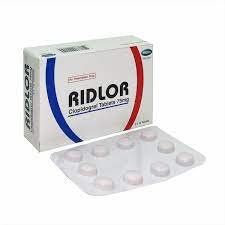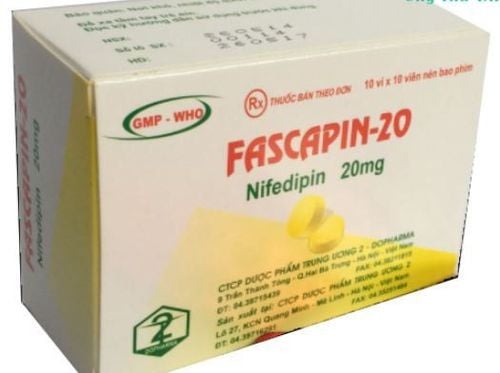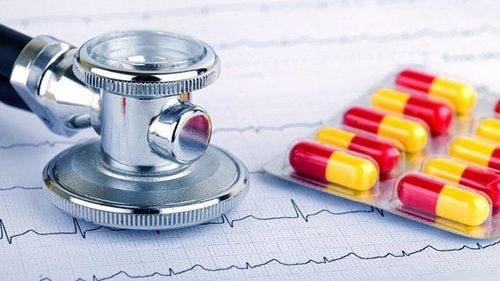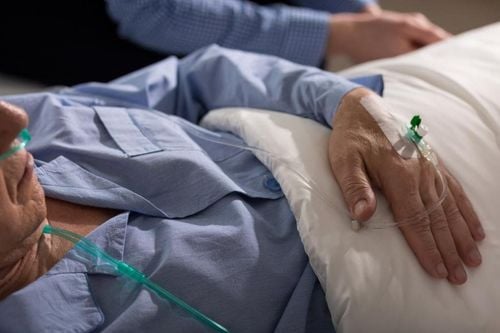This is an automatically translated article.
Blood vessels are part of the circulatory system, carrying blood from the heart to the organs of the body. When blocked, ruptured or dilated blood vessels will lead to organ damage. Therefore, protecting the blood vessel wall is important in reducing human morbidity and mortality.1. Structure of blood vessels
The vascular system includes arteries, veins and capillaries with the following structure:
Arterial and venous walls: Includes outer, middle and inner layers. The outer mantle contains connective tissue; the middle layer consists of smooth muscle fibers and elastic elastic fibers; Inner coat made of vascular endothelial cells. Capillary wall: Only the endothelial cell layer, which helps in the exchange of substances between the blood and organs in the body. In addition, endothelial cells also play a very important role in the function of blood vessels. These cells act as receptors for physical and chemical signals. Endothelial cells produce and release nitric oxide, which dilates blood vessels, allowing increased blood flow to the organs. In contrast, endothelial cells also produce endothelin and other substances that can constrict blood vessels, responding to the ever-changing oxygen demands of tissues. In particular, endothelial cells also prevent white blood cells from sticking to blood vessel walls during cholesterol formation, protecting blood vessels against injury and threats from bacteria and pollutants. Therefore, the protection of blood vessel walls is very important for humans.
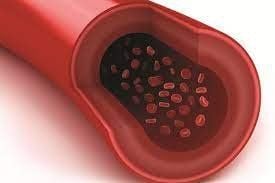
Bảo vệ thành mạch máu rất quan trọng trong việc giảm bệnh tật và tử vong cho con người.
2. Types of blood vessel wall damage
Types of blood vessel wall damage include:
Vascular occlusion: This is a condition in which the blood flow to organs such as the heart, brain, lungs and extremities is blocked. Depending on the condition of partial or complete blockage, it causes conditions such as myocardial infarction, stroke, pulmonary embolism ... which can be life-threatening. Rupture of blood vessel: The wall of a vessel is torn, allowing blood to escape from the lumen. Depending on the location of the broken blood vessel (rupture under the skin, brain or in the abdomen) will cause certain consequences. Vasodilation: When blood vessels dilate, their diameter and volume increase blood flow to the organs. However, when the blood vessels dilate too much, it leads to a drop in blood pressure.
3. Causes of damage to blood vessel walls
There are many causes of damage to blood vessel walls such as:
Age. Smoke. Unhealthy nutrition, like eating a lot of salt or saturated fat. Diseases such as hypertension, diabetes, dyslipidemia.

Bảo vệ thành mạch máu là yếu tố cần thiết để ngăn ngừa các vấn đề về tim mạch, bệnh lý mạch máu.
4. How to protect the walls of blood vessels?
Injury to the endothelium often progresses insidiously as vascular hardening or cholesterol plaques in the vessel walls. Therefore, it is necessary to protect the vascular wall from a young age by combining an active healthy lifestyle and treating the underlying disease if any.
1 healthy lifestyle to protect blood vessel walls is as follows:
Healthy diet: Eat lots of fruits and vegetables, especially the kind that contain bioflavonoids, omega-3s that are good for the heart. Bioflavonoids are potent plant-based antioxidant nutrients found in many fruits and vegetables, and the lighter the food, the higher the bioflavonoid count. Omega-3s help keep blood vessels strong, protecting the body against damaging free radicals. Reduce sodium intake: Avoid processed, prepackaged foods or meals because they contain high levels of sodium that makes the body work harder to get rid of salt, leading to blood vessel damage, increased heart attack risk. Therefore, before buying canned foods, read the labels to check the sodium content. Drink enough water: Water is an important ingredient in almost any recipe for staying healthy. Plasma makes up about half of our total blood volume and contains about 93% water, so try to drink at least 2 liters of water a day. Vitamins: Vitamins B3, C and D are important because it improves blood circulation, which reduces inflammation. Exercise: This is a method that can prevent varicose veins and improve blood circulation. You can choose from exercises like cycling, using an elliptical, swimming or even yoga. Don't smoke, limit alcohol and stabilize underlying medical conditions such as blood sugar, blood pressure, dyslipidemia, cardiovascular condition. In summary, vascular wall protection is essential to prevent a wide range of cardiovascular problems, cerebrovascular and peripheral artery disease. Combining a healthy diet, not smoking, exercise, blood sugar control and stable blood cholesterol levels will increase the strength of blood vessel walls, giving you a healthy life.
Please dial HOTLINE for more information or register for an appointment HERE. Download MyVinmec app to make appointments faster and to manage your bookings easily.
References: Ncbi.nlm.nih.gov, Health.harvard.edu, Alatehealth.com



